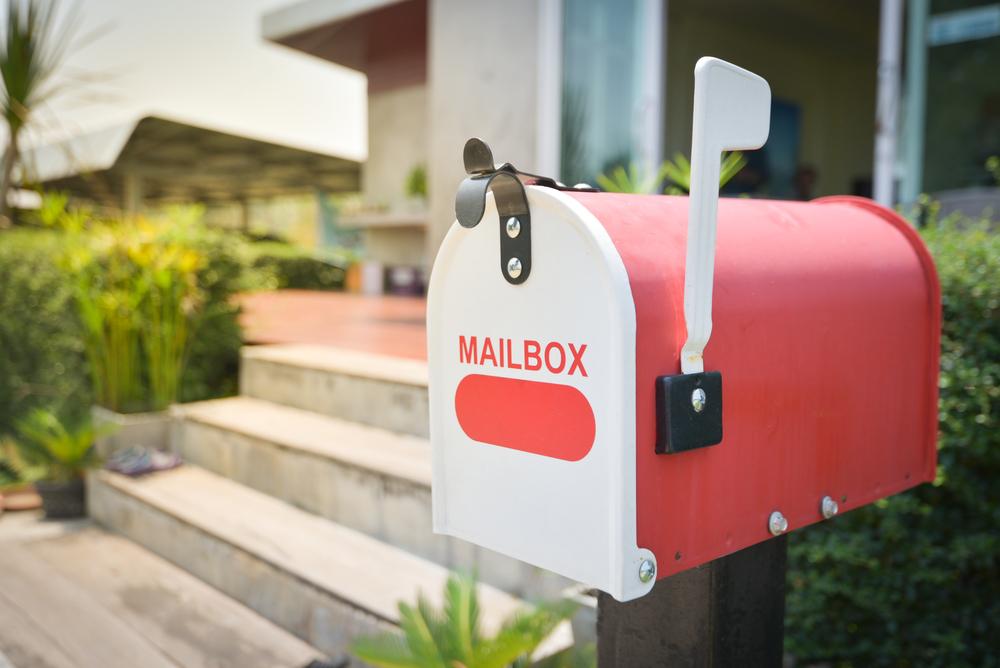Business News Daily provides resources, advice and product reviews to drive business growth. Our mission is to equip business owners with the knowledge and confidence to make informed decisions. As part of that, we recommend products and services for their success.
We collaborate with business-to-business vendors, connecting them with potential buyers. In some cases, we earn commissions when sales are made through our referrals. These financial relationships support our content but do not dictate our recommendations. Our editorial team independently evaluates products based on thousands of hours of research. We are committed to providing trustworthy advice for businesses. Learn more about our full process and see who our partners are here.
You’ve Got Mail: 4 Tips on Using Direct Mail for Business
No one likes junk mail, so use these tips to ensure your direct mail doesn’t get tossed.

Table of Contents
In an age when the internet allows us to instantly communicate with anyone across the globe, relying on the U.S. Postal Service (USPS) to deliver your small business’s marketing may sound counterintuitive. But direct mail remains one of the best ways for small businesses to reach previous customers and bring in new ones. Here are some reasons why your company should include direct mail in its marketing strategy and some best practices to follow when implementing a direct mail campaign.
Editor’s note: Need direct mail services for your business? Fill out the below questionnaire to have our vendor partners contact you with free information.
What is direct mail?
Direct mail is a business marketing strategy that involves sending physical mail — such as postcards, brochures or other printed items — straight to a current or prospective customer’s mailbox. Businesses can develop direct mail campaigns in-house or use a marketing agency that specializes in direct mail. These agencies help with all stages of the process, including design, shipping and tracking. Whether your small business caters to individual consumers or other businesses, direct mailing can help you maximize the return on your advertising investment by focusing on the customers who are most likely to respond to your message.
“Direct mail creates a one-on-one connection that’s hard for other media channels to match,” said Tom Foti, vice president of product solutions for the USPS. “It lets you incorporate coupons, reply cards, mobile barcodes such as QR codes, URLs and other response mechanisms. … Direct mail is a workhorse for generating leads, traffic and sales.”
Tips for using direct mail in your business
Considering that most direct mailing services handle every aspect of a campaign, from design to shipping, there are many aspects to remember when you’re starting out with direct mail. To get a better idea of some of the best practices involved in direct mail, Business News Daily reached out to experts to get their insights on how you can get the most bang for your buck out of a direct mailing campaign.
1. Target your customers.
A direct mailing campaign can only be successful if the address data lines up with the type of customer you want to target. More than 167.1 million pieces of first-class mail pass through the USPS each day, so you need a solid mailing list to make sure your direct mailers go to the right places.
Sometimes, small businesses simply get appropriate addresses from their customer data. While that method saves money in the long run, not every direct mailing campaign should draw on an existing customer base; many times, you want to bring in new faces. If that’s the case, you’ll likely either get your list directly from your direct mailing provider or obtain one through a list broker.
In either case, you can usually pinpoint which houses or businesses you want to target with your direct mailers by selecting specific criteria, such as household income, recently engaged couples, or businesses owned by people in specific minority communities. You can also specify an area to target, such as by designating specific zones or setting a radius.
According to Milena Marguenski, owner of US Presort, most businesses will want to create a “best customer profile” that helps them visualize the people they want to reach.
“Some businesses want to target customers with very high incomes, while others want the opposite,” she said. “Your demographic selection strictly depends on your type of business. What’s important is that the more targeted the list, the higher the results.”
2. Grab their attention.
When it comes to direct mail marketing, you’re already reaching a somewhat captive audience. They have to retrieve their mail eventually, so your materials are likely to be read by someone. It’s also pretty helpful that 71 percent of Americans say they are excited to see what is in the mail each day, according to the USPS 2020-2021 Generational Research Report. Considering you already have access to a customer once your mailer is in their home, it’s important to make a good impression once your mailer gets there.
It makes sense that a well-designed mailer works better than an uninteresting one. It should have clean, easy-to-read fonts and relevant graphics that aren’t so flashy that they draw attention away from the information you’re trying to convey. You should also make sure your copy is devoid of misspellings or grammatical errors, since those will stick out. Focus on the highest return on investment over the lowest cost, and don’t try to fool your customers by saying a piece is “urgent” when it’s not, Foti advised.
“Any package or interactive mail piece will always perform better than a simple postcard,” Marguenski added. “Besides the pure aesthetic, your design has to follow postal rules if you don’t want to pay extra for irregular sizes or pieces that don’t comply with postal regulations.”
Most direct mail services have an in-house design team to help you create the most effective mailers to match your specifications. Usually, these services are rolled into your costs, though more customized services may require additional costs. It’s important not to skimp on this part, since receiving your mailer will often be the first interaction a potential customer has with your brand.
3. Give customers a reason to care.
People are mostly transactional by nature. With that in mind, you should make sure your direct mailers have a strong call to action, or a reason to buy or use your goods or services. That can be as easy as offering a promotion to new customers, like a percentage off a purchase if they bring the mailer into the store.
According to PrintingForLess.com, our overall pick for the best direct mailing service, your call to action can be the difference between an interested customer and a fast track to the recycling bin.
“Don’t expect much response if you’re only offering $1 off your next purchase of $100 or more,” PrintingForLess.com representatives wrote. “Make the offer as attractive as you can while still being profitable. You may need to experiment to get the optimum balance between response rate and profit margin.” [Read related article: Small Business Guide to Direct Mail]
4. Track results and follow up.
Even though direct mail isn’t a digital service, you can still extract meaningful data from your campaign. Many direct mail vendors have built-in methods to track the return on investment for your direct mailing campaign.
While you will want as high a return as possible, remember that an effective direct mail campaign simply gets consumers through the door. Each campaign is different, but according to the Association of National Advertisers (ANA) 2021 Response Rate Report, direct mail has a response rate of 9 percent for house lists and 5 percent for lists of prospective customers, compared with email’s response rate of around 1 percent.
A 95 percent failure rate with potential new customers may seem abysmal, but many factors can cause a person to respond to your mailer. The important step to take in this instance is to remember to follow up on your campaign.
“Not everyone is going to buy from you just because you send them a postcard,” said Shawn Breyer, owner of Breyer Home Buyers. “Most people won’t be ready to buy your product or services, or they will just be too busy to check it out.”
When drawing up a direct mailing campaign, Breyer said, most businesses should establish a “monthly marketing plan for at least six months.” Your follow-up could catch the customers you didn’t get the first time.
Why use direct mail?
Spending precious marketing resources on direct mail at a time when everything seems to be going digital might not seem like a smart strategy, but studies consistently show that direct mail is still one of the best ways to bring in new and repeat customers. Here are some recent findings that show why your business should use direct mail:
- On average, 4 in 10 consumers are more excited about direct mail than they were a year ago. Gen Z and millennials are over 60 percent more excited, according to the 2022 RRD Macro Marketing Report.
- Younger generations actually find direct mail exciting and more personal than digital communications, the USPS 2020-2021 Generational Research Report found.
- Consumers describe direct mail as being more trustworthy and attention-grabbing than email, per the 2022 RRD Macro Marketing Report.
- Direct mail has an engagement rate of around 95 percent, and it is interacted with at least four times, according to the 2021 MarketReach Direct Mail Effectiveness Report.
- Personalized mailers increase engagement rates and response rates, both MarketReach and USPS found.
- According to MarketReach, 70 percent of consumers feel valued by a company when they receive direct mail — almost twice as much as they do for email.
- Direct mail has a higher return on investment than other mediums, reaching up to 112 percent, the 2021 ANA Response Rate Report found.
How to use direct mail
The data shows that direct mail continues to be an essential marketing tool for businesses. It allows companies to send personalized, tailored messages to different consumer demographic groups. Every marketing campaign is different, so the best way to ensure direct mail is effective is to know your target customers and send them appropriate messages designed to maximize engagement, including relevant offers or calls to action. Read our Direct Mail Marketing Guide for Small Businesses for a detailed look at how to create and implement a direct mail marketing campaign.
The most successful campaigns are integrated, using both digital channels and direct mail. As businesses increasingly move online, the relevance and impact of direct mail remain strong. If you want your marketing campaign to succeed, direct mail is a must.
Tom Anziano and Sammi Caramela contributed to this article. Some source interviews were conducted for a previous version of this article.
















